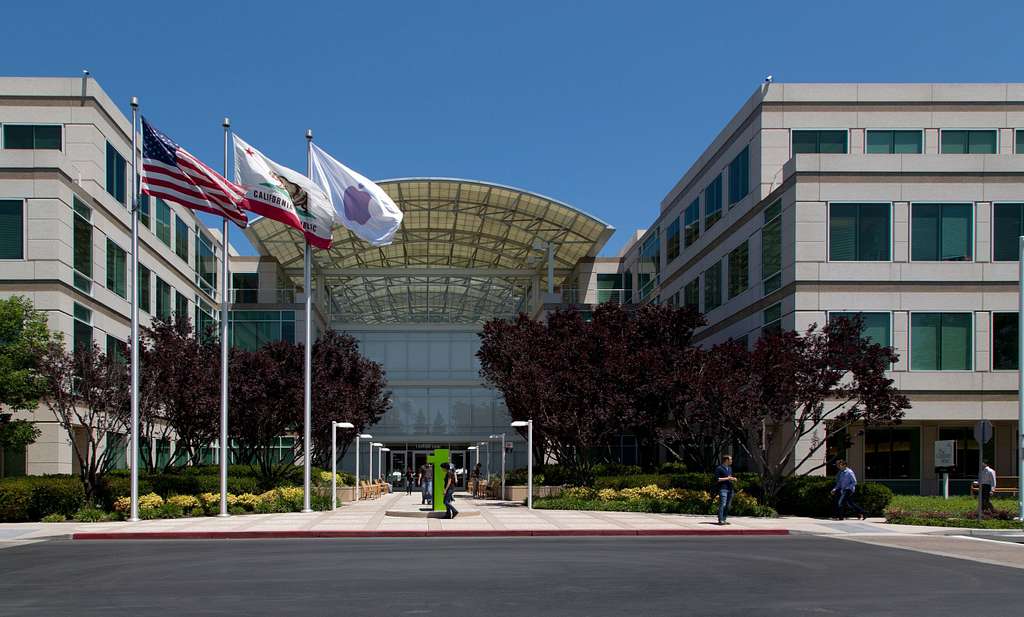You finally check your 401(k) and boom—there it is. A six-figure balance that makes you feel like a retirement rockstar. But hold up. Before you start pricing beachfront condos and imagining piña coladas on Tuesdays, here’s the plot twist: your 401(k) might be telling you a prettier story than reality.
The truth? That shiny retirement account can come with a lot of hidden risks nobody talks about at the office lunch-and-learn. Fees, taxes, timing traps—you name it. And if you’re not looking closely, those little details can quietly erode the dream you’ve been building for decades. So, before you get too comfy, let’s unpack 13 sneaky ways your 401(k) might be playing you—and how to make sure it doesn’t.
1. The Fees Are Sneakier Than You Think

You know that moment when you realize your $13 salad was actually $20 after tax, tip, and a sneaky delivery fee? That’s your 401(k) in a nutshell. While most people assume their retirement account is a tidy little growth engine, fees can quietly shave thousands—yes, thousands—off your future balance. As The New York Times reports, many 401(k) plans have layers of hidden costs tucked into fund management, administrative services, and advisory fees. And they’re not always easy to spot unless you go full CSI on your plan documents.
Even a 1% fee over 30 years can eat up nearly 20% of your retirement savings. That’s the difference between beach drinks and grocery budgeting in your 70s. Worse, employers often offer “default” plans that quietly steer you into higher-cost mutual funds. The solution? Open your statements. Ask your HR rep for a fee breakdown. Then shop around for lower-cost index fund options like you’re comparing phone plans. Because trust—your future self would rather have that extra cash than an overpriced fund manager.
2. You’re Not Actually Diversified (Even If It Says You Are)

Ah yes, the trusty pie chart. Your 401(k) dashboard says you’ve got a “diversified portfolio”—maybe a little stock, a little bond, a sprinkle of international flavor. But here’s the kicker: many 401(k) plans offer options that look diverse but are secretly just variations of the same thing. According to Investopia, a lot of target-date funds and balanced portfolios are overweighted in U.S. large-cap stocks, meaning they rise and fall together.
Translation? Your whole pie chart might crumble if one piece takes a hit. And if you’re thinking, “But I have international exposure!”—yeah, so does Apple. True diversification means spreading risk across uncorrelated asset classes, like REITs, bonds from different regions, or even commodities. If all your eggs are just in different shades of blue, that’s still one basket. And one bad market day could toast your toast. Time to audit your allocations like a boss.
3. Your “Match” Isn’t Free Money If You’re Vesting Slowly

Cue the corporate confetti—“We offer a 401(k) match!” Great, right? Well… maybe. Many employers love to tout generous matches, but then bury the fine print: you don’t actually own that money right away. Welcome to the world of vesting schedules, where your employer contributions are only truly yours after a few years of loyal service. Per CNBC, nearly half of all employer plans require up to six years for full vesting.
So if you bounce to a new job every two or three years (hi, millennials), you might be walking away from thousands in “match” money. It’s the corporate version of “look but don’t touch.” The fix? Read your plan’s vesting schedule like you’d read a dating app bio—carefully and with healthy skepticism. If you’re not planning to stay long-term, you might want to negotiate bonuses elsewhere or increase your own contributions. Because free money that disappears isn’t really free at all.
4. Required Minimum Distributions Can Wreck Your Tax Bracket

You spend decades building that 401(k) like a savings fortress—only to find out the government forces you to take money out starting at age 73 (thanks, RMDs!). And here’s the kicker: those withdrawals are taxed as ordinary income. As Schwab explains, Required Minimum Distributions can push retirees into higher tax brackets just as they’re trying to live on a fixed income. So that comfy nest egg? It can start bleeding taxes faster than expected.
What’s worse is that RMDs can also mess with your Medicare premiums by increasing your “modified adjusted gross income.” Double whammy. The government calls it “distribution,” but it kind of feels like they’re just dragging you out of bed with a calculator and a grin. The fix? Start planning your withdrawal strategy in your 60s. Consider converting some 401(k) funds to a Roth IRA before RMD age to soften the blow. Because no one wants to turn 73 and suddenly feel like they’re being mugged by their own retirement plan.
5. Target-Date Funds Can Be Way Too Passive

Target-date funds are marketed like the slow-cooker of investing: just set it and forget it. But like any set-it-and-forget-it situation, sometimes what’s cooking doesn’t turn out right. These funds automatically shift your portfolio from high-risk to low-risk investments as you age, which sounds great in theory. But JP Morgan notes that many of them rely on cookie-cutter models that don’t actually adjust for market realities—or your personal situation.
If you’re still working at 68 or retiring at 55, a target-date fund might be completely misaligned with your needs. Plus, they can be loaded with underperforming funds and hidden fees (yep, those again). You also have zero control over allocation shifts—even if the market is tanking. They feel safe, but sometimes they’re just lazy investing with a nice haircut. If you’re using one, check under the hood: what’s actually inside that target-date mix? Passive doesn’t mean smart. Sometimes it just means asleep at the wheel.
6. Inflation Can Eat More Than You Think

So you’ve got a big ol’ 401(k) number that looks great now—but have you adjusted for the fact that everything from coffee to car insurance is doubling faster than your returns? Inflation is like that quiet friend who never says much but still manages to crash your entire party. Over a 20- to 30-year retirement, even mild inflation can seriously shrink your spending power. That $1 million nest egg? It might only feel like $600K once you’re deep into retirement.
Many people assume their 401(k) grows faster than inflation, but not all investments are built to beat it. Especially if your portfolio leans conservative as you age (hello, bonds and cash equivalents), you could be slowly losing ground. And if you’re pulling out steady income each year, those withdrawals start biting deeper into your balance. It’s not just about what you save—it’s about what your money can actually buy in 2040. Spoiler: probably not that beach house. To fight back, make sure your portfolio includes some inflation-protected assets. Otherwise, your “comfortable retirement” might turn into “comfortable-ish.”
7. Sequence of Returns Risk Is a Total Vibe Killer

You could save like a boss your whole career, only to retire into a recession and suddenly—bam—your entire plan gets yeeted. This is called sequence of returns risk, and it’s one of the sneakiest 401(k) threats out there. Basically, if the market tanks right after you start withdrawing, you’ll be selling investments at a loss while also reducing your balance faster than it can recover. Think of it like trying to refill your water bottle while someone punches a hole in the bottom.
It’s not just about how much you’ve saved—it’s when you start taking money out. Two people with the same portfolio could have wildly different outcomes depending on what the market does in their first few retirement years. The fix? Consider building a cash cushion or low-volatility bucket to cover early retirement expenses without selling your 401(k) assets in a downturn. Or stagger your withdrawals based on market performance. It’s not sexy, but neither is running out of money at 81. Timing is everything, and sadly your portfolio doesn’t come with a crystal ball.
8. Taxes Don’t Retire When You Do

The dream: retire, sleep in, live your best life. The reality: the IRS still sends you love letters. That’s because your traditional 401(k) is tax-deferred—not tax-free. And the second you start pulling out funds, Uncle Sam is there with his hand out. A lot of retirees are shocked to find themselves paying more in taxes than expected, especially if they’re also collecting Social Security or part-time income.
Your withdrawal counts as ordinary income, which means it could bump you into a higher tax bracket real quick. It also might trigger higher Medicare premiums or reduce other benefits. That “million-dollar 401(k” might only feel like $700K after taxes take their bite. And Roth conversions? Those have their own tax baggage if not planned right. If you’re not running the numbers now, future-you might be stuck with a tax bill and no write-offs left to soften the blow. Retirement doesn’t mean tax-free—it just means it’s time to get really strategic.
9. Your Plan Might Not Keep Up With Tech (or Security)

You assume your money is safe, right? It’s in a 401(k), it’s managed, and the website usually works. But what happens when your provider’s system is outdated, gets hacked, or just can’t keep up with basic account visibility? Cybersecurity threats to retirement accounts are rising, and older platforms don’t always have the tools to keep your data locked down. Even worse, many 401(k) providers bury changes to your plan in legalese emails no one reads.
Add to that outdated user dashboards, clunky rebalancing tools, and poor communication, and it’s a recipe for confusion at best—or serious errors at worst. Have you checked if your beneficiaries are updated recently? Or whether your password is still “password123”? If your 401(k) provider hasn’t modernized, you could be flying blind. It’s worth a check-in to confirm your plan is secure, current, and clear. Because no one wants to be that retiree calling customer service while squinting at a 2007-era webpage.
10. Market “Corrections” Can Feel Way Bigger in Retirement

Here’s a fun twist: market dips that felt annoying in your 30s suddenly feel catastrophic in your 60s. When you’re still working, you can ride out bear markets with a beer and a shrug. But once you’re living off your 401(k), every 10% drop feels like a personal attack. The emotional toll of watching your balance shrink—while also needing to pull money from it—is no joke.
Many retirees panic-sell during corrections, locking in losses they can’t afford. Others freeze up entirely and avoid rebalancing, hoping the storm will just pass. Either approach can mess with your long-term success. You need a game plan before the market hiccups, not after. That means deciding in advance how much you’re comfortable losing temporarily—and sticking to it. Having a mix of cash, bonds, and less volatile assets can help buffer those inevitable gut-punch years. Market swings are normal, but in retirement, they can hit very differently.
11. Employer Plans Often Limit Your Investment Choices

Think you’ve got the whole investing world at your fingertips? Think again. Most 401(k) plans only offer a curated list of mutual funds—some of which are, frankly, kind of meh. They may be loaded with fees, underperforming, or just way too similar to one another. And because you’re locked into what your employer picked, you can’t always buy into the assets you actually want—like REITs, commodities, or lower-fee ETFs.
This lack of flexibility can seriously cap your growth potential. It’s like showing up to a buffet and being told you can only eat the beige stuff. One workaround? Once you hit a certain age—or leave your job—you may be able to roll over your 401(k) into an IRA, which offers way more choices. Until then, it’s worth digging into your plan options and seeing if there’s a “brokerage window” that gives you a little more freedom. Because your money deserves better than whatever default fund HR picked five years ago.
12. You Might Forget to Rebalance—And That’s a Problem

Set it and forget it is a vibe… until your portfolio gets wildly off-balance and you’re unknowingly overexposed. Rebalancing is the art of bringing your investments back to your target mix, and skipping it for a year (or five) can tilt your risk way out of whack. That “moderate” portfolio you built in your 50s could be leaning hard into aggressive territory if stocks have been booming. Or vice versa—you might be stuck too conservatively and missing out on growth.
If you’re not checking in at least once a year, your 401(k) could be cruising on autopilot in the wrong direction. And no, target-date funds don’t always fix this for you (see: Post #5). Rebalancing forces you to sell high and buy low—literally investing 101. It can also help you stay calm during corrections, knowing your risk is right where you want it. Set a calendar reminder, do a quarterly check, or ask your provider if automatic rebalancing is an option. Because ignoring your allocation is like letting your plants die and blaming the weather.
13. Your Income in Retirement Might Not Be What You Expect

Here’s the rude awakening: a $1 million 401(k) doesn’t mean you have $1 million to spend. Once you factor in taxes, inflation, RMDs, market shifts, and rising healthcare costs, the income your portfolio can safely generate could be way less than you think. Many retirees use the 4% rule as a guide—withdraw 4% of your savings per year—but that’s a starting point, not a promise.
Market returns aren’t guaranteed, and neither is your personal longevity. A few rough years early in retirement, and suddenly your “forever money” might only last 20 years. You need to plan based on realistic withdrawal rates, and build in wiggle room for those surprise expenses life loves to serve up. Otherwise, you could go from “comfortable retiree” to “part-time greeter at Home Depot” real quick. A steady stream of income takes more than just a big number—it takes strategy, flexibility, and a Plan B (and C). Because your 401(k) is just a tool. It’s how you use it that counts.
This article is for informational purposes only and should not be construed as financial advice. Consult a financial professional before making investment or other financial decisions. The author and publisher make no warranties of any kind.







